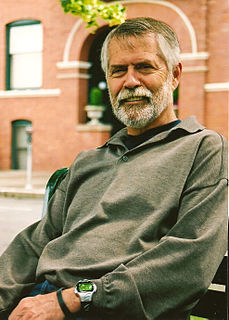A Quote by William Safire
Never look for the story in the 'lede.' Reporters are required to put what's happened up top, but the practiced pundit places a nugget of news, even a startling insight, halfway down the column, directed at the politiscenti. When pressed for time, the savvy reader starts there.
Related Quotes
Halfway down the stairs, is a stair, where I sit. There isn't any, other stair, quite like, it. I'm not at the bottom, I'm not at the top; So this is the stair, where, I always, stop. Halfway up the stairs, isn't up, and isn't down. It isn't in the nursery, it isn't in the town. And all sorts of funny thoughts, run round my head: It isn't really anywhere! It's somewhere else instead!
I was a weed. Such a skinny little weed. I just couldn't put on weight; I couldn't put on muscle. I was the oddest shape. And I thought that was it: that's how I'd look for the rest of my life. And I'd beat myself up about it so much. But you change an awful lot. You're 16. Your body's not even halfway to what it'll end up being.
We're exposing our minors to abuse by the fact that they leave the radio on in the car and let them listen to the news on the way to school. Or the fact that it's shown on the news, the children can see Gaddafi's face and his glorious Technicolor clothes getting shot off on the news or on the newspaper shelves. In the shelves of the shops where all the sex magazines are consciously put at the top, if they're consciously put at the top, that must mean the violence is all put at the bottom consciously.
For me, even in the most subtle and introspective story, it's all about tension: this is the thread that ties a reader to story, something in the rhythm and in the argument that hypnotizes and pushes us to read with great attention. As a reader, I love the storytellers who play with this, and as a writer it is something I always look for.
Nice writing isn't enough. It isn't enough to have smooth and pretty language. You have to surprise the reader frequently, you can't just be nice all the time. Provoke the reader. Astonish the reader. Writing that has no surprises is as bland as oatmeal. Surprise the reader with the unexpected verb or adjective. Use one startling adjective per page.
War reporters are often seen as a wild bunch of thrill-seekers who wade into danger zones simply for the sake of the adrenalin high the settings inevitably provide. But this one-dimensional explanation leaves out the core of the story, which is that reporters go to these places because they feel the tug of responsibility.
































